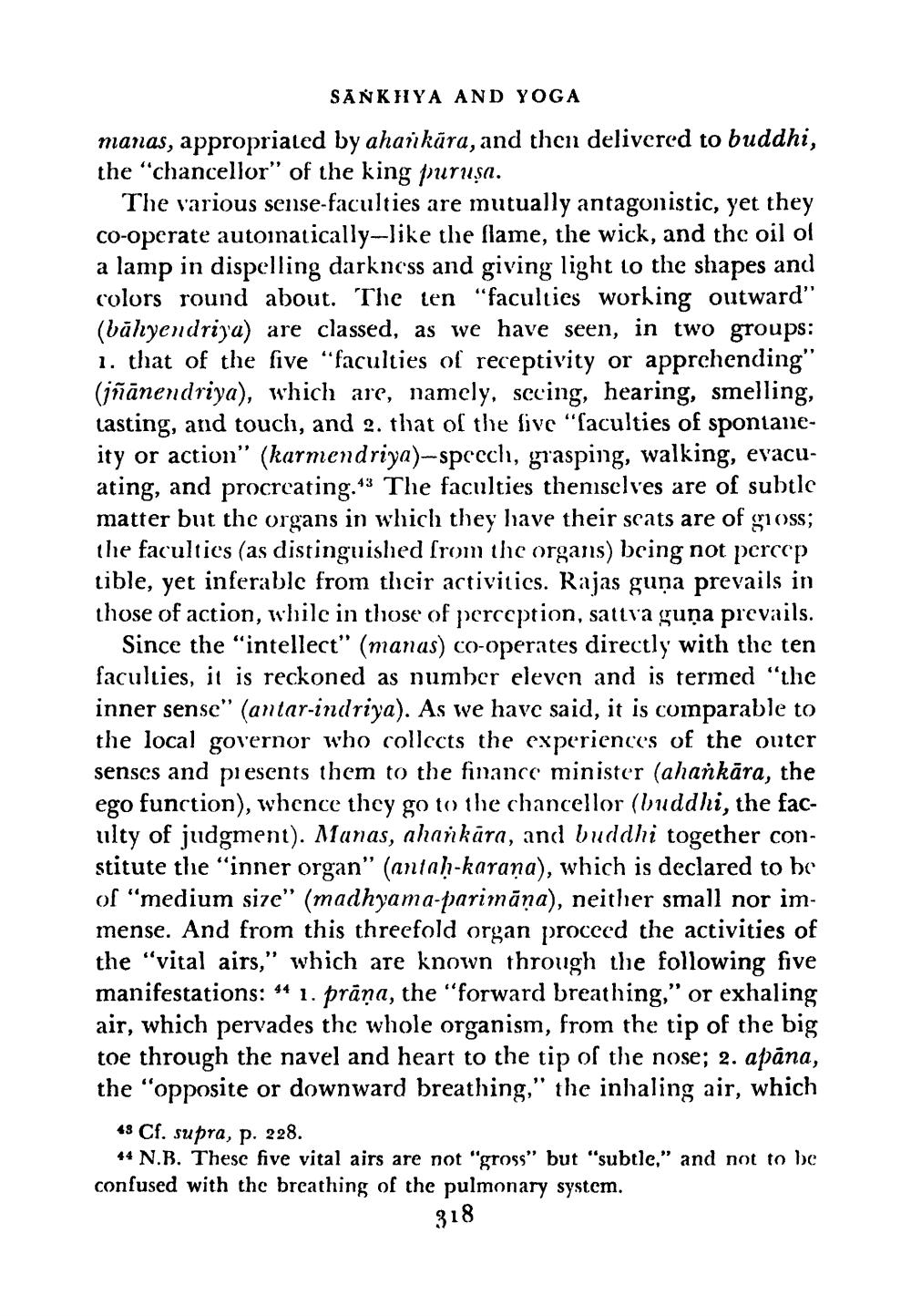________________
SANKHYA AND YOGA manas, appropriated by ahaikāra, and then delivered to buddhi, the “chancellor" of the king puruşa.
The various sense-faculties are mutually antagonistic, yet they co-operate automatically-like the flame, the wick, and the oil of a lamp in dispelling darkness and giving light to the shapes and colors round about. The len "faculties working outward" (bālyendriya) are classed, as we have seen, in two groups: 1. that of the five "faculties of receptivity or apprchending" (jñānendriya), which are, namely, secing, hearing, smelling, lasting, and touch, and 2. that of the five "faculties of spontaneity or action” (karmendriya)-speech, grasping, walking, evacuating, and procrcating:43 The faculties thenselves are of subtle matter but the organs in which they have their scats are of gross; the faculties (as distinguished from the organs) being not percep cible, yet inferable from their activities. Rajas guna prevails in those of action, while in those of perception, sattva guņa prevails.
Since the "intellect" (manas) co-operates directly with the ten faculties, it is reckoned as number eleven and is termed "the inner sense" (antar-indriya). As we have said, it is comparable to the local governor who collects the experiences of the outer senses and piesents them to the finance minister (ahankāra, the ego function), whence they go to the chancellor (buddhi, the faculty of judgment). Manas, ahankūra, and buddhi together constitute the winner organ” (antah-karaņa), which is declared to be of "medium size" (madhyama-parimāņa), neither small nor immense. And from this threefold organ proceed the activities of the “vital airs," which are known through the following five manifestations: 44 1. prāņa, the "forward breathing," or exhaling air, which pervades the whole organism, from the tip of the big toe through the navel and heart to the tip of the nose; 2. apāna, the "opposite or downward breathing," the inhaling air, which
48 Cf. supra, p. 228. 44 N.B. These five vital airs are not "gross" but "subtle," and not to be confused with the breathing of the pulmonary system.
318




